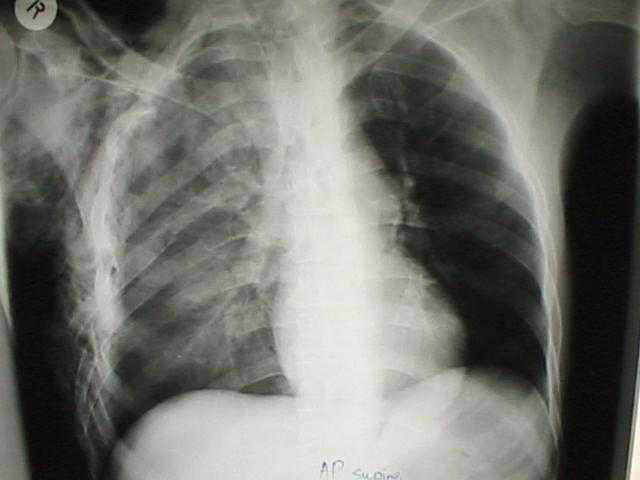Subcutaneous emphysema chest x ray
|
Subcutaneous emphysema Microchapters |
|
Diagnosis |
|---|
|
Treatment |
|
Case Studies |
|
Subcutaneous emphysema chest x ray On the Web |
|
American Roentgen Ray Society Images of Subcutaneous emphysema chest x ray |
|
Risk calculators and risk factors for Subcutaneous emphysema chest x ray |
Please help WikiDoc by adding more content here. It's easy! Click here to learn about editing.
Editor-In-Chief: C. Michael Gibson, M.S., M.D. [1]
Overview
On a chest radiograph, subcutaneous emphysema may be seen as radiolucent striations in the pattern expected from the pectoralis major muscle group. Air in the subcutaneous tissues may interfere with radiography of the chest, potentially obscuring serious conditions such as pneumothorax.[1] It can also and reduce the effectiveness of chest ultrasound.[2] On the other hand, since subcutaneous emphysema may become apparent in chest X-rays before a pneumothorax does, its presence may be used to infer that of the latter injury.[3]
Chest X Ray
Shown below is a chest X-ray of a right sided pulmonary contusion associated with flail chest and subcutaneous emphysema.

References
- ↑ Criner GJ, D'Alonzo GE (2002). Critical Care Study Guide: text and review. Berlin: Springer. p. 169. ISBN 0-387-95164-4. Retrieved 2008-05-12.
- ↑ Gravenstein N, Lobato E, Kirby RM (2007). Complications in Anesthesiology. Hagerstown, MD: Lippincott Williams & Wilkins. p. 171. ISBN 0-7817-8263-5. Retrieved 2008-05-12.
- ↑ Wicky S, Wintermark M, Schnyder P, Capasso P, Denys A (2000). "Imaging of blunt chest trauma". European Radiology. 10 (10): 1524–1538. PMID 11044920.